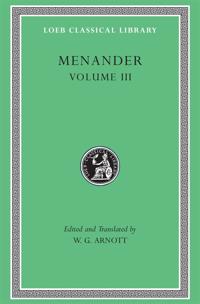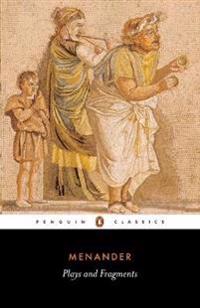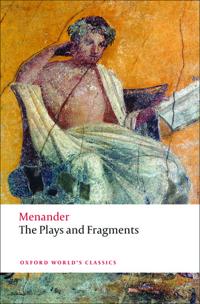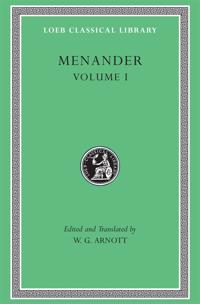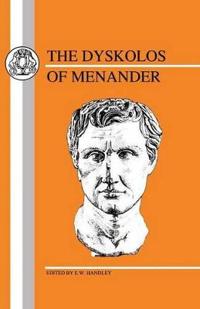Menander: Samia (The Woman From Samos) (Inbunden)
avMenander
ISBN: 9780521514286 - UTGIVEN: 2013-11-30The first edition for half a century of any play of Menander designed for English-speaking students reading it in Greek.[...]
Menander: Samia (The Woman From Samos) (Pocket)
avMenander
ISBN: 9780521735421 - UTGIVEN: 2013-11-30The first edition for half a century of any play of Menander designed for English-speaking students reading it in Greek.[...]
Menander (Inbunden)
avMenander
ISBN: 9780674995840 - UTGIVEN: 200006This volume completes the Loeb Classical Library's new edition of the leading writer of New Comedy. W. G. Arnott, an internationally recognized Menander expert, provides a Greek text based on careful study of recently discovered papyri, a facing translation that is lucid and fits today's tastes, and[...]
Plays and Fragments (Pocket)
avMenander, Norma Miller, Menander
ISBN: 9780140445015 - UTGIVEN: 1988-02Describes the background of Menander's plays, and provides notes along with new translations of more than fifteen of his plays[...]
The Plays and Fragments (Pocket)
avMenander, Maurice (TRN) Balme, Peter (INT) Brown
ISBN: 9780199540730 - UTGIVEN: 2008-07Menander was the founding father of European comedy. From Ralph Roister Doister to What the Butler Saw, from Henry Fielding to P. G. Wodehouse, the stock motifs and characters can be traced back to him. The greatest writer of Greek New Comedy, Menander (c.341-290 BC) wrote over one hundred play[...]
Menander
ISBN: 9780674991477 - UTGIVEN: 1979-06These comedies by Menander reveal that the oft-employed theme of mistaken identity is as old as the Great Dionysia. Teachers and students will find that this edition remains loyal to the Greek originals without confining itself to the literalism that has made many previous translations unusable in t[...]
Reproducing Athens: Menander's Comedy, Democratic Culture and the Hellenistic City (Övrig)
avSusan Lape
ISBN: 9780691115832 - UTGIVEN: 2003-11-24"Reproducing Athens" examines the role of romantic comedy, particularly the plays of Menander, in defending democratic culture and transnational polis culture against various threats during the initial and most fraught period of the Hellenistic Era. Menander's romantic comedies - which focus on ordi[...]
Menander (Häftad)
ISBN: 9780812216523 - UTGIVEN: 1998-01The Penn Greek Drama Series presents original literary translations of the entire corpus of classical Greek drama: tragedies, comedies, and satyr plays. It is the only contemporary series of all the surviving work of Aeschylus, Sophocles, Euripides, Aristophanes, and Menander. The translations in t[...]
Menander In Antiquity (Inbunden)
avSebastiana Nervegna
ISBN: 9781107004221 - UTGIVEN: 2013-04-25Reconstructs the ancient afterlife of Menander by focusing on three contexts of reception: public theatre, private entertainment and schools.[...]
The Dyskolos of Menander
ISBN: 9781853991875 - UTGIVEN: 1999-06This well established scholarly edition was first published in 1965, seven years after publication of the papyrus containing the text. It includes introductory essays on scenery, staging, setting, actors and their roles, costumes and masks. The Greek text is accompanied by an apparatus and a full co[...]


